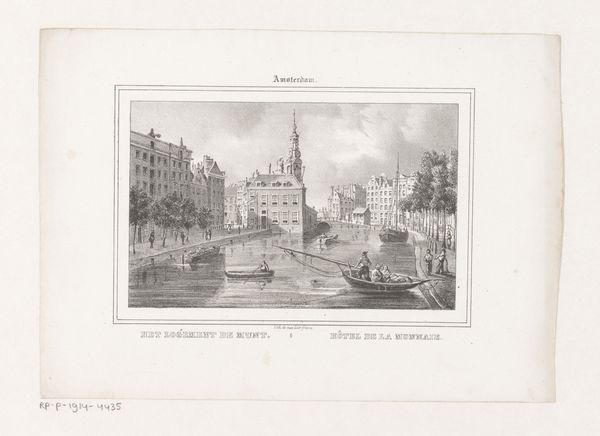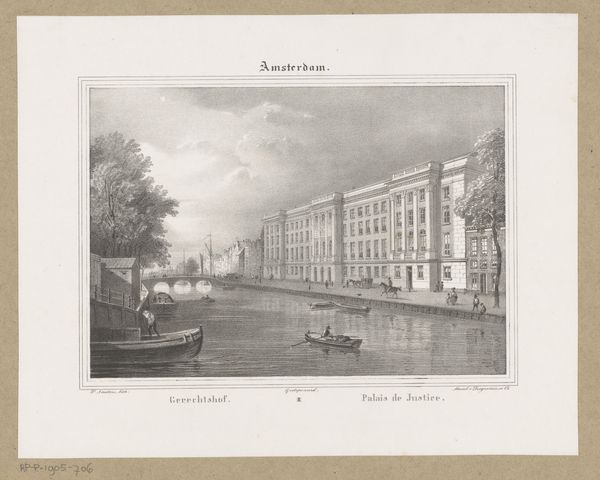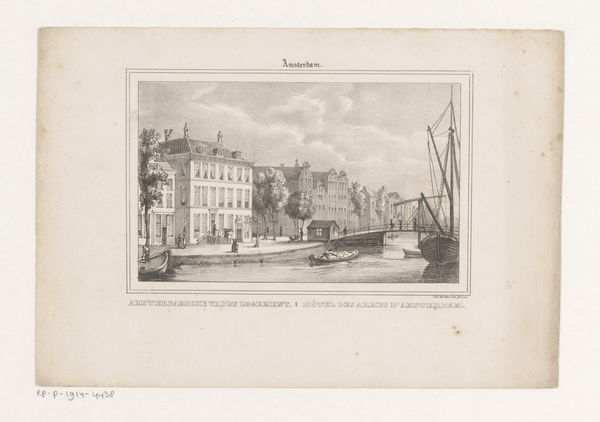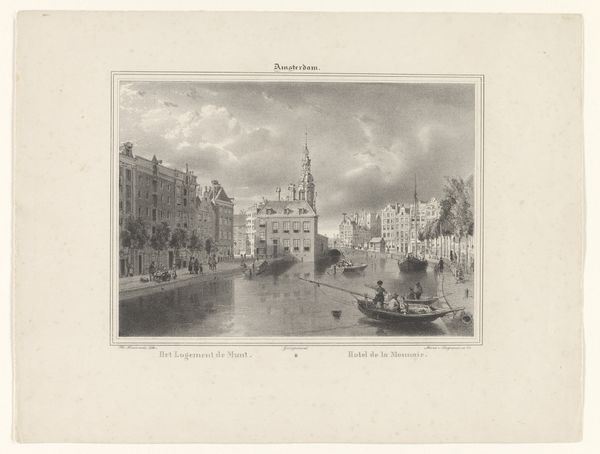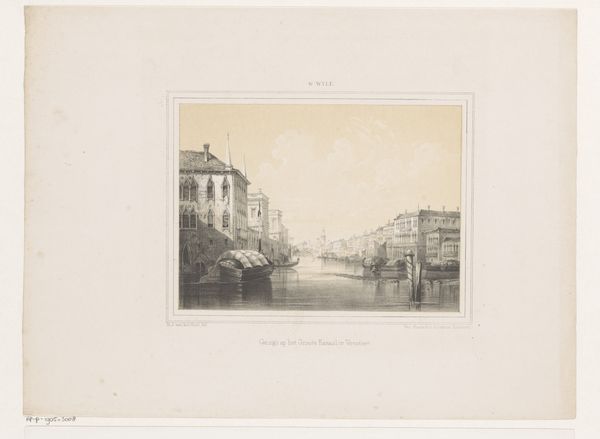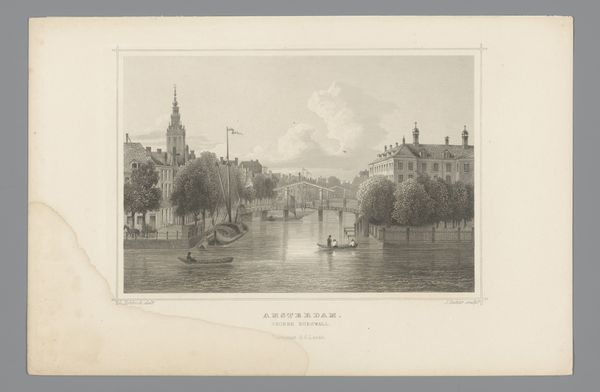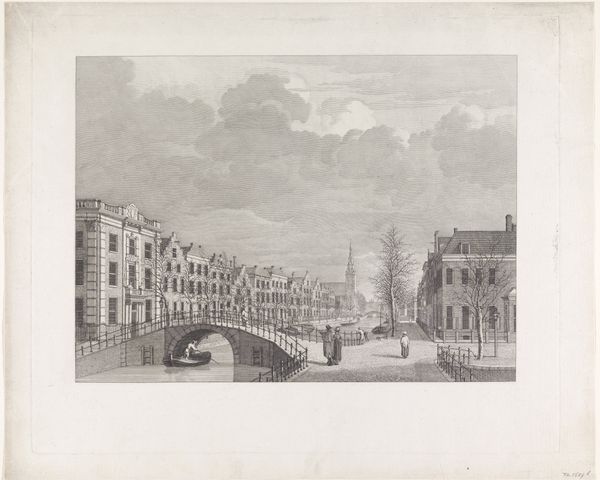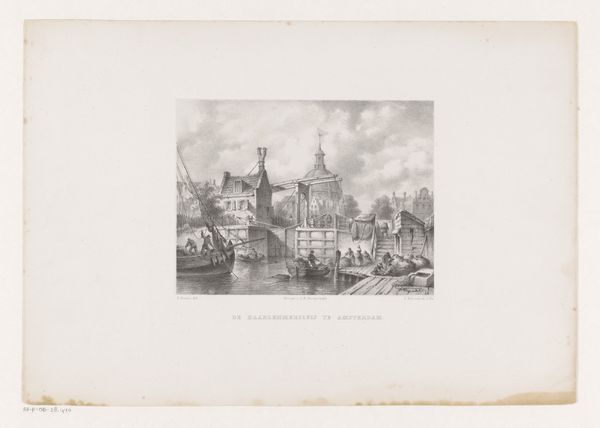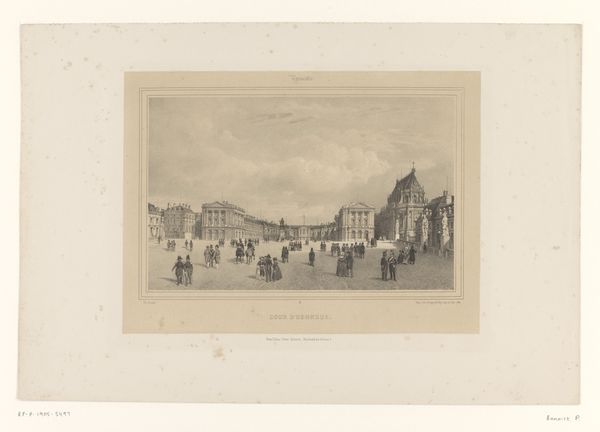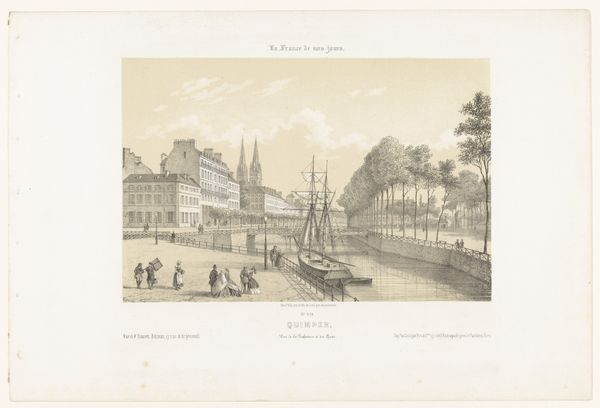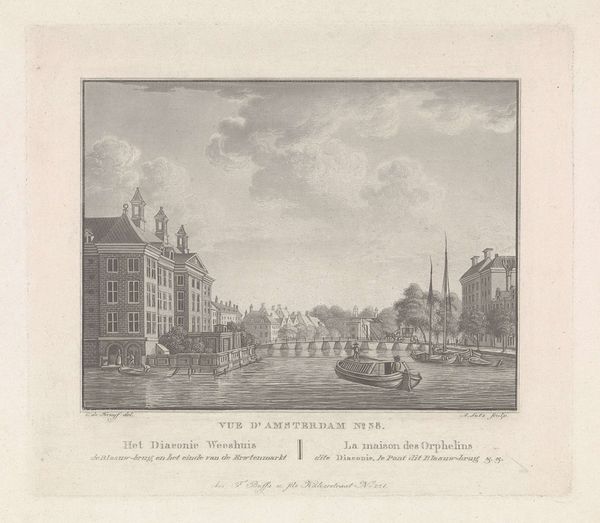
print, engraving
#
dutch-golden-age
# print
#
landscape
#
romanticism
#
cityscape
#
engraving
Dimensions: height 153 mm, width 222 mm
Copyright: Rijks Museum: Open Domain
Curator: Let's discuss "Gezicht op de Keizersgracht te Amsterdam," a print made sometime between 1833 and 1850, currently held at the Rijksmuseum. My first impression is its calming, almost idealized quality. The orderly architecture, the gently flowing water… Editor: The remarkable aspect is the deliberate choice of the engraving method. It encourages inquiry into the labor behind the creation of multiple, near-identical copies intended for mass distribution. Consider how this print medium democratized access to fine art depictions of Amsterdam, enabling consumption beyond the elite circles who originally inhabited the Keizersgracht. Curator: The choice of imagery also invites consideration. The Keizersgracht itself serves as a potent symbol of Amsterdam’s Golden Age, of prosperity and mercantile power. But even in this idyllic depiction, you see figures like merchants, implying the work and trade behind the facade. Editor: Indeed, notice the laborers in boats juxtaposed with more leisurely vessels. The artist subtly reveals the societal mechanisms supporting such perceived serenity. Was Van Straten making an assertion about class structure through contrasting modes of waterway usage? It's not just aesthetics, it’s a view into labor and material relationships. Curator: Interesting point. The composition directs your eye to the stately buildings that line the canal; those imposing facades represented wealth and status. Van Straten seems less invested in symbolism and more fascinated by the buildings and their presence on the canal. Editor: I’d argue, though, that architecture serves as a materialized embodiment of wealth produced and accumulated by particular sectors. Analyzing construction and use contextualizes architecture, turning facades into components within a complex arrangement involving work, ownership, and societal portrayal. Curator: Well, whatever the perspective, it does offer a look into a fascinating moment in Amsterdam's history. It encourages contemplation about its relationship between architecture, class, labor, and the way the image can reveal all of this. Editor: Precisely. Examining production and distribution allows appreciation for the historical significance imbedded into this picturesque setting, prompting a reconsideration of our connection to history's material facts and their cultural effect on display within an Amsterdam canal.
Comments
No comments
Be the first to comment and join the conversation on the ultimate creative platform.
